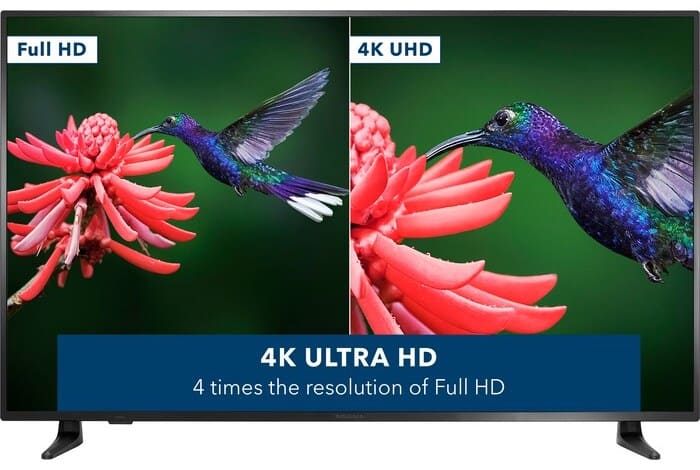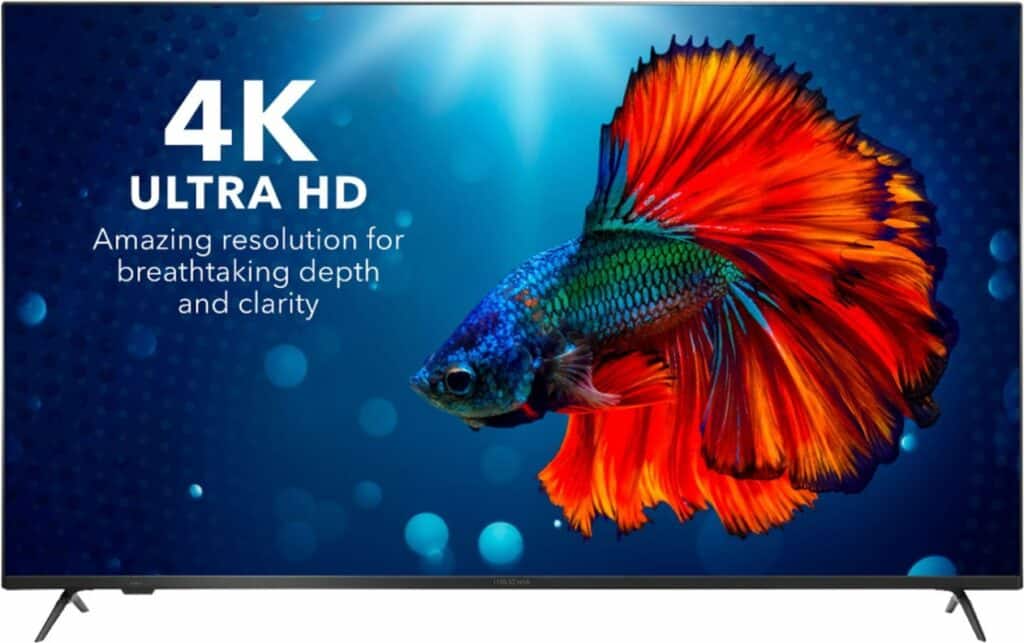If you’re looking for a budget TV, Insignia’s models are a good option. However, with several models out there, you might be wondering which Insignia TV is better.
In this article, we’ll review Insignia F30 vs F50 and list the major differences between the two models.
Insignia F30 vs F50 – Quick Overview
The biggest difference between Insignia F30 and F50 is that the F50 has Quantum Dot technology (QLED), which allows it to have a wider color range. This creates a better and more enjoyable viewing experience.
In addition, the F50 model has a stronger build with metal legs (useful if your TV is going on the table and not mounted on the wall). Continue reading to find out all the differences and similarities between these two TVs.
Insignia F30
Insignia F30 is an impressive TV, but don’t expect too much from it. It’s “armed” with Alexa (voice assistant) and Fire TV, which is probably Insignia’s biggest selling point (apart from the low price) and has top-grade native color.
Most problems that plague other Insignia models also plague the F30 — this includes poor sound quality, bad viewing angles, and the lack of any extra features. Plus, the components may be outdated.
Pros:
- Budget-friendly
- Excellent native color
- Alexa VA and Fire TV enabled
Cons:
- Poor sound quality
- Bad viewing angles
- No extra features
- Often outdated components
Insignia F50
Insignia F50 isn’t too different from its predecessor, but it definitely has a few upgrades.
The biggest one, as we mentioned already, is that it’s a QLED, which means it has a better range of colors. Other than that, the F50 has a wide app selection and handles reflection decently.
However, the F50 model didn’t improve much from its predecessor in terms of audio quality and viewing angles.
Pros:
- Excellent color range and contrast
- Wide app selection
- Handles reflection nicely
Cons:
- Poor sound quality
- Bad viewing angles
Features Face to Face
Now let’s take a look at Insignia F30 vs F50 features face-to-face to get a clearer picture.
Panel Technology
Insignia F30 uses the standard LED VA (Vertical Alignment) panel technology, which uses light-emitting diodes (LED) to make an image out of an electronic signal.
Insignia F50 uses a QLED panel, which means it offers better color range, accuracy, contrast and brightness. In other words, it can produce a higher quality picture and, therefore, a better viewing experience, but this comes at the cost of more energy being consumed.
Winner: Insignia F50
Image Processor
All Insignia TVs use a quad-core MediaTek MTK T31/L processor with ARM Cortex-A55. This is a SoC (system-on-a-chip) processor (all the components are on one chip) and has a maximum clock speed of 1.5GHz.
Winner: Draw
Motion Technology
The F30 has a response time (represents how quickly pixels can transition from one color to the next) of 20.8ms, which is way over the 14ms standard.
Additionally, there’s no Black Frame Insertion (BFI) option (this tells us how good the TV’s flickering capability is in making the motion clear when we want flicker), and the TV is not flicker-free, so you’ll probably see some flicker at 240Hz.
Finally, the F30 model has a native refresh rate of 60Hz.
The F50 has a much better response time, with 12.1ms, but it’s still not good enough for displaying fast action in games, for instance, and you’ll notice some blur here and there.
It also doesn’t include optional backlight strobing (Black Frame Insertion) and is not flicker-free (flickers below max at all backlight levels).
Like F30, the F50 also has a native refresh rate of 60Hz.
Winner: F50
Picture Quality
Of course, the picture quality will vary from model to model, so keep that in mind as we compare these two.
Contrast Ratio / Black Level
Overall, Insignia TVs can boast a very good native contrast. Insignia F30, for instance, has a native contrast (difference between whites and blacks) of 4,660:1 and blacks look very good in a dark room.
In comparison, F50 has even better native contrast (4,883:1) and also displays deep blacks in darker environments.
Winner: F50
Local Dimming
Local dimming is a feature that allows the TV to make already dark colors like black even darker. This is very useful for improving contrast.
Unfortunately, Insignia’s TVs lack the local dimming feature; this goes for both F30 and F50.
Winner: Draw
Peak Brightness
Peak brightness represents the maximum brightness that the TV can get (useful in very bright environments).
This is measured in candelas per square meter (cd/m2) or nits (these two units are completely interchangeable) and includes two types — SDR and HDR brightness.
With Insignia F30, you can expect a peak brightness of around 277 cd/m2 for SDR (okay) and 288 cd/m2 for HDR peak brightness, which is mediocre at best. However, his is considerably better than the TCL S series, which we reviewed in this Insignia vs TCL comparison article.
The Insignia F50, on the other hand, has an SDR peak brightness of 329cd/m2 and HDR peak brightness of around 350cd/m2, so it’s slightly better, but it still can’t compare to some more premium TVs like Samsung. Check out our Samsung vs Insignia article to learn more.
Winner: F50
Color
Overall, Insignia TVs have a very good color gamut, representing a wide range of colors.
The F30 has DCI P3 xy of 78.16% and DCI P3 uv of 84.22%, which is solid in both cases, but doesn’t have the wide color gamut option available and has below-par color volume coverage, which means it can’t display saturated colors very well.
The F50 has an even better color gamut — DCI P3 xy at 93.90% and DCI P3 uv at 96.00%, which can be considered a wide color gamut. It also has good color volume, though it still can’t display saturated colors very well.
Winner: F50
Viewing Angle
Insignia F30 has pretty awful viewing angles, and you definitely shouldn’t watch this TV from any position but dead-center, as the picture will rapidly get worse. The TV loses 75% of its lightness already at 25 degrees.
The F50 isn’t much better when it comes to viewing angles; you can expect the colors to rapidly lose accuracy and the brightness to drop to 75% of the original value at 30 degrees or so.
Winner: F50
Reflections / Anti-Glare
The F30 model has a semi-gloss finish and handles reflections well in an averagely lit room, though it might struggle in a room with more light coming in.
With F50, you also get a semi-gloss screen finish and a solid reflection handle, especially in an averagely-lit room, but you might want to close your drapes if you have a lot of windows.
Winner: Draw
Sound Quality
In general, don’t expect very good sound quality from Insignia TVs with built-in speakers of 20W at best.
With F30, you’ll get a really poor frequency response, so the sound will be anything but balanced, but it does handle distortion okay, although with some spikes.
The F50 has a mostly well-balanced sound as long as you listen to it on normal levels. When it comes to distortion, it handles it very well, although there are some issues in the bass range.
Winner: F50
Smart TV Platform (Operating System)
Both models use Amazon’s Fire TV smart operating system and have a smooth interface and a great app selection, while the app smoothness is average.
Unfortunately, neither TV is ad-free, and there is no way to disable ads.
Winner: Draw
Connectivity
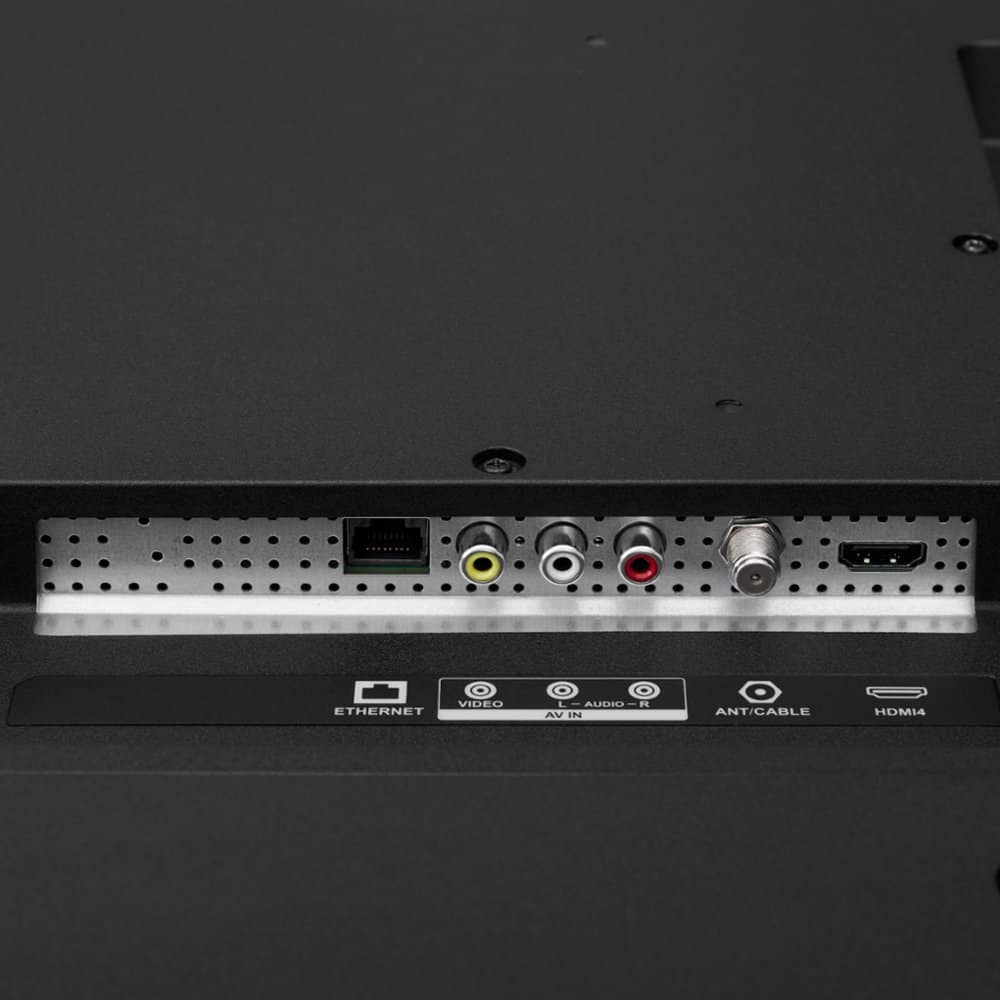
Inputs
| Input Ports | Insignia F30 | Insignia F50 |
|---|---|---|
| HDMI Ports | 3 Ports | 4 Ports |
| USB Ports | 1 Port | 1 Port |
| Digital Optical Audio Out | 1 Port | 1 Port |
| Ethernet | Yes | Yes |
Insignia F30 has a low input lag (the delay between input and on-screen reaction), and at 1080p@60Hz it’s 34.5ms.
It also supports different resolutions, including 1080p@60Hz@4:4:4 chroma (must be in PC mode and set the output to RGB), but some common resolutions like 1080p@120Hz are not supported, which is a bit of a surprise.
In comparison, F50 has excellent low input lag (only 10.6ms for 1080p@60Hz), so it should provide a good gaming experience.
The problem is that it doesn’t support a lot of resolutions, including 1080p@60Hz@4:4:4, so it can’t display chroma signals very well.
Winner: Draw
Voice Assistant
Both Insignia F30 and F50 use Amazon’s Alexa Voice Assistant, which is one of the most powerful VAs out there with plenty of features, including content search, input changing, app launch, etc.
Winner: Draw
Wireless Technologies
Both Insignia models support 2.4GHz and 5GHz Wi-Fi, as well as Bluetooth.
Winner: Draw
Price
Most Insignia TVs are sold at BestBuy, so there aren’t that many on Amazon to choose from. Their price is usually around $200, with a few more expensive ones.
Here are two models that are currently available on Amazon:
Insignia 32-inch LED
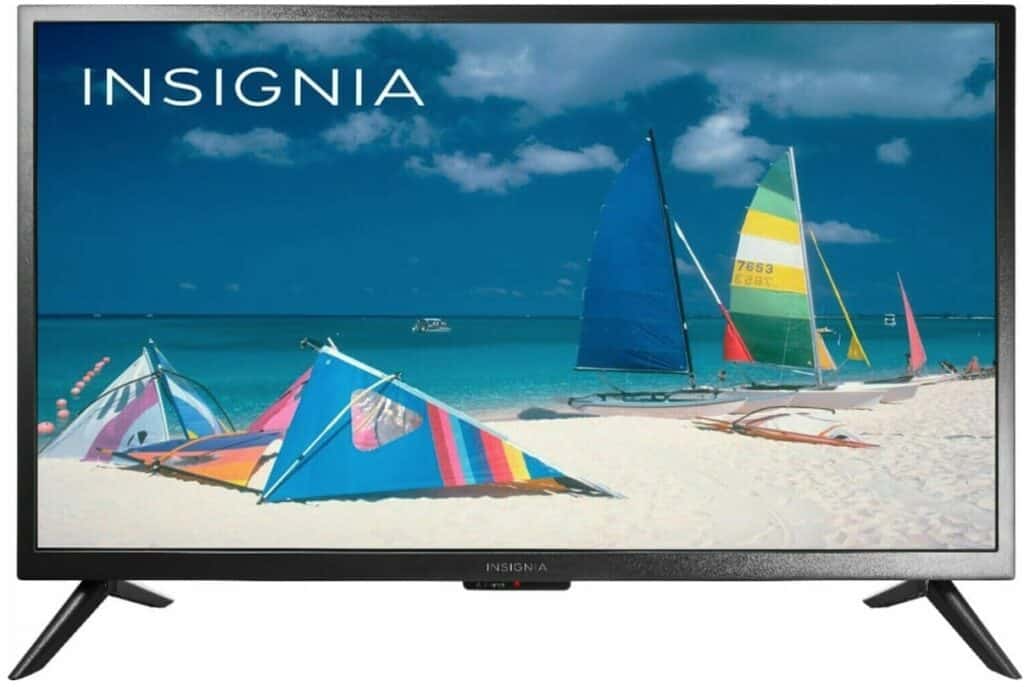
Insignia 40-inch LED
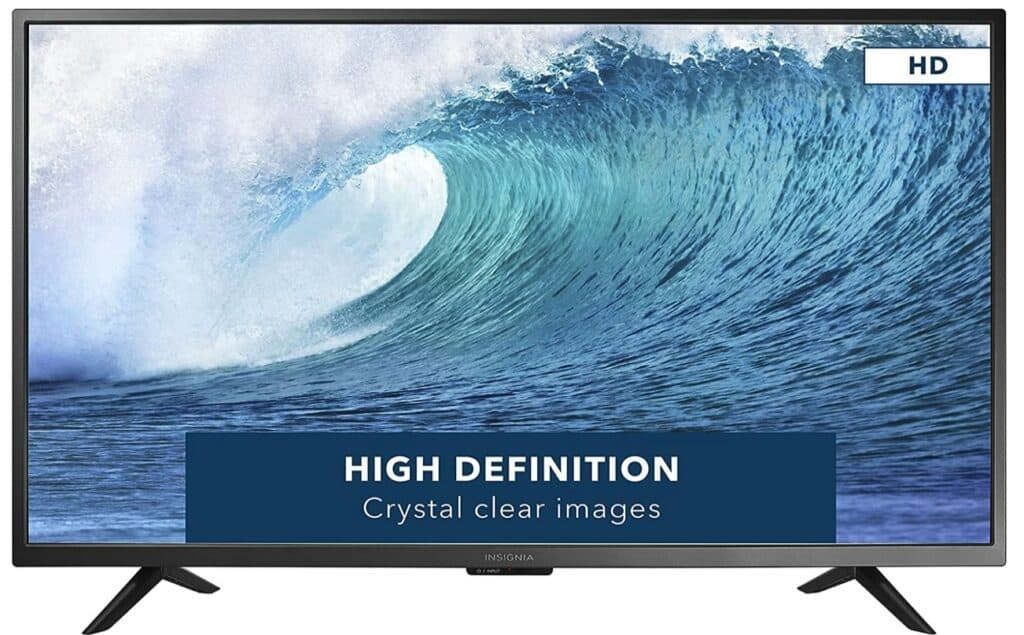
Conclusion
Overall, Insignia TVs are a very good option for budget-focused consumers, and this goes for both of these models. Basically, don’t expect any fireworks with this TV brand. You get what you pay for.
However, with the QLED panel and a few upgrades, we have to give our vote in this Insignia F30 vs F50 review to the newer model (F50).
If you want to see Insignia compared to some other TVs, check out these posts next:
